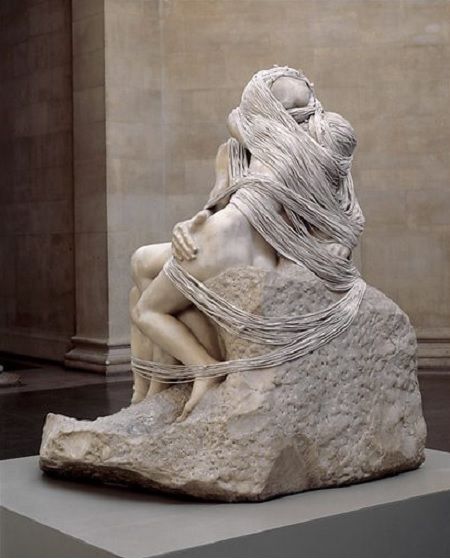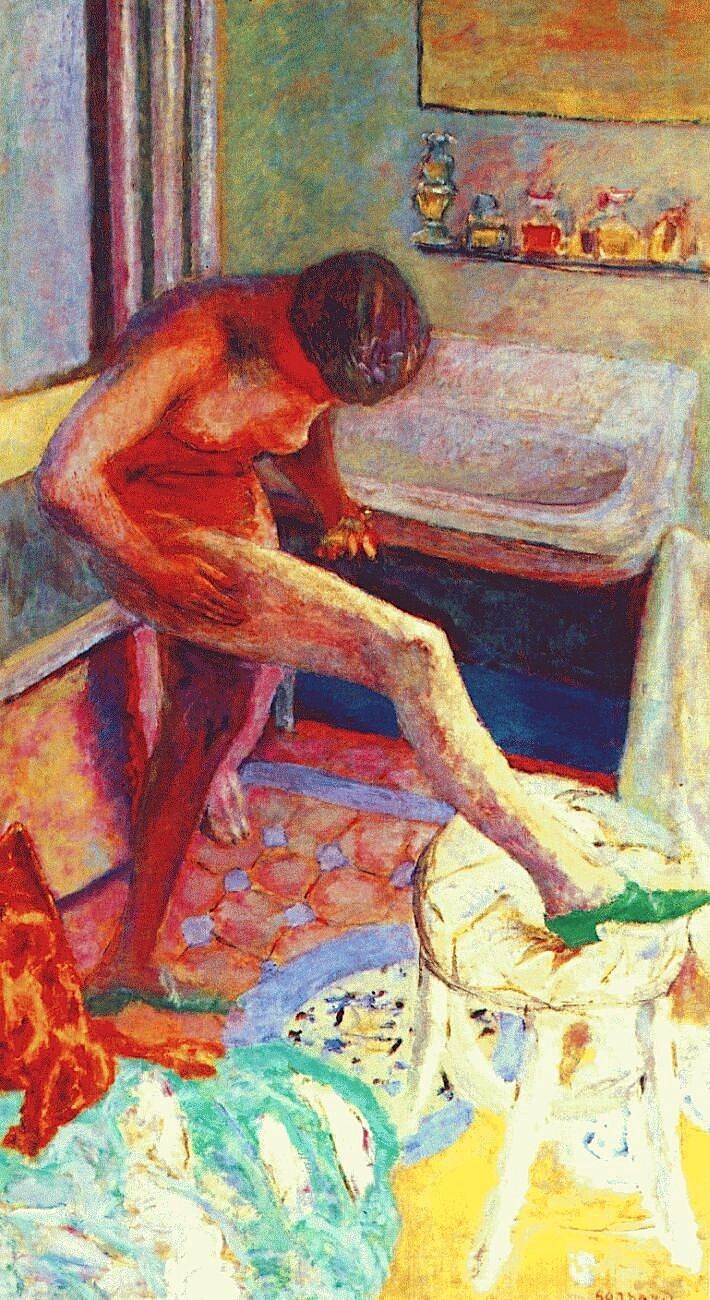The main motivation for a vertical bed as a life drawing prop is to draw reclining poses without the pesky foreshortening. It’s a simple way to create the illusion of a bird’s eye view. However several artists have shown how the vertical or bird’s eye view of the bed can be employed to interesting effect in its own right.
Freud often worked with the motif of the mound of rags as he had a large pile in his studio which he used for wiping brushes, doubling up as a prop for his models. ‘Standing by the Rags’ recreates the effect of the ‘vertical bed’ as the shallow picture depth makes it ambiguous whether the figure is standing or lying. The pose looks simultaneously comfortable and awkward. It is as if the model is nestled into the rags but her weight is not quite supported and the whole thing could collapse at any minute (as vertical beds have a habit of doing!). In fact the pose was possibly inspired by the tradition of deposition paintings that showed Christ being lowered from the cross, with the rags standing in for the supporting figures.This would elevate the painting to the status of an altarpiece. Freud gives equal attention to the detail and texture of the rags and the figure, drawing a comparison between the folds in the fabric and the folds in the skin. Meanwhile the cool tones of the rags contrast with Freud’s warm, ruddy flesh palette.
Lucien Freud, Standing by the rags, 1988-89.
Contemporary artist Lee Price makes photo-realistic paintings about women’s relationship with food, often from a bird’s eye view. Every one of her works is a self-portrait, and the viewpoint is not one of the voyeur but of the subject looking down on herself, as if in an out of body experience. Nevertheless there is a tension created between privacy and disclosure in the private setting of the bed. Whilst most of Price’s paintings feature women eating mountains of junk food, the bowl of peaches and sleeping figure make this a transitional piece, where food is no longer an all-consuming object associated with guilt but a source of nourishment. This peaceful mood is reflected in the surroundings of rippled white sheets. The sequence of images featuring variations on the composition evokes the natural shifting of position during sleep, suggesting the passing of time. In a similar and equally beautiful series, Price paints women in the bath from a birds eye view. Definitely worth a look!
Lee Price, Sleeping with Peaches, 2011.
Another triptych, Vincent Desiderio’s ‘Sleep’ is an epic 24 foot painting of figures sleeping side by side from a bird’s eye view.The tableau of figures lined up creates an anonymity as each individual gets lost in a pattern of shapes and drapery, and their faces fall into the shadows. This could be a creative alternative to producing many quick drawings on separate sheets of paper. ‘Sleep’ was intended to represent a communal sleep - the sleep of our culture, or the sleep of reason, a subject famously depicted by Goya in his suite of satires ‘Los Caprichos’. You may recognise the painting from rapper Kanye West’s appropriation for a voyeuristic view of 12 celebrities in his music video ‘Famous’, which appropriately made Desiderio’s ‘Sleep’ famous.
Vincent Desiderio, Sleep, 2008, with Kanye West, Famous, 2016.
















